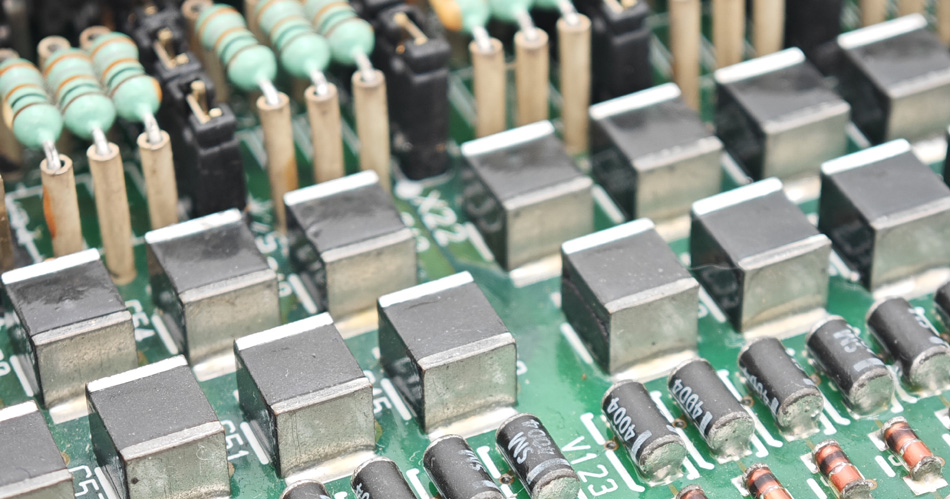- English
- Español
- Português
- русский
- Français
- 日本語
- Deutsch
- tiếng Việt
- Italiano
- Nederlands
- ภาษาไทย
- Polski
- 한국어
- Svenska
- magyar
- Malay
- বাংলা ভাষার
- Dansk
- Suomi
- हिन्दी
- Pilipino
- Türkçe
- Gaeilge
- العربية
- Indonesia
- Norsk
- تمل
- český
- ελληνικά
- український
- Javanese
- فارسی
- தமிழ்
- తెలుగు
- नेपाली
- Burmese
- български
- ລາວ
- Latine
- Қазақша
- Euskal
- Azərbaycan
- Slovenský jazyk
- Македонски
- Lietuvos
- Eesti Keel
- Română
- Slovenski
- मराठी
- Srpski језик
How to handle customer complaints and feedback in PCBA processing
2025-05-17
During the PCBA (Printed Circuit Board Assembly) processing process, customer complaints and feedback are important bases for enterprises to improve product quality and service. Effectively handling customer complaints and feedback can not only improve customer satisfaction, but also help enterprises identify and solve potential problems and optimize production processes. This article will explore how to handle customer complaints and feedback in PCBA processing to achieve continuous improvement and business growth.

1. Timely response to customer complaints
The first step in handling customer complaints is to ensure timely response. When customers encounter problems, they expect to get feedback and solutions quickly. Enterprises should take the following measures:
Establish a response mechanism: Set up a dedicated customer service team or complaint handling department to ensure that each complaint is handled in a timely manner.
Set response time: Establish clear response time standards, such as replying to customers within 24 hours to show attention to customer issues.
Maintain communication: In the process of handling complaints, maintain close communication with customers, regularly update the progress of handling, and enhance customer trust.
2. Conduct detailed complaint analysis
A detailed analysis of customer complaints is the key to solving problems. Enterprises should take the following steps:
Collect complaint information: Comprehensively collect detailed information on customer complaints, including problem description, occurrence time, products involved, etc., for in-depth analysis.
Analyze root causes: Use tools such as root cause analysis (RCA) to find out the root causes of complaints. This may involve production processes, material problems, design defects, etc.
Identify patterns and trends: Analyze complaint data, identify common problems and trends, and provide a basis for the formulation of improvement measures.
3. Formulate and implement improvement measures
Based on the results of complaint analysis, formulating and implementing corresponding improvement measures is a key step in solving problems:
Optimize production processes: According to the content of the complaint, optimize the production process, improve the process or equipment to avoid the recurrence of similar problems.
Adjust design plans: If the complaint involves product design issues, work with the design team to optimize product design and improve product reliability and performance.
Improve quality control: Strengthen quality control measures to ensure that problems are discovered and corrected in a timely manner during the production process and reduce failure rates.
4. Provide remedies and compensation
When handling customer complaints, providing reasonable remedies and compensation can enhance customer satisfaction:
Provide solutions: Provide appropriate solutions such as product replacement, fault repair or refund according to the nature of the complaint.
Reasonable compensation: Reasonably compensate customers for losses caused by product problems to express the company's sincerity and sense of responsibility.
Return visit confirmation: After solving the problem, make a return visit to confirm the customer's satisfaction with the solution and ensure that the problem is completely solved.
5. Establish a feedback mechanism
Establishing an effective feedback mechanism will help to continuously improve products and services:
Collect customer feedback: In addition to handling complaints, actively collect customer feedback and understand customer satisfaction with products and services.
Analyze feedback data: Regularly analyze customer feedback data, identify improvement points, and promote continuous optimization of products and services.
Encourage customer participation: Encourage customers to actively participate in feedback and suggestions to increase customer trust and loyalty to the company.
6. Train employees
Training employees and improving their ability to handle customer complaints and feedback is also an important aspect of improving service quality:
Training customer service skills: Train employees' communication skills, problem-solving skills and emotional management to improve the efficiency and effectiveness of handling complaints.
Popularize quality awareness: Enhance the quality awareness of all employees, let every employee realize the importance of quality to customers, and actively maintain quality standards in daily work.
Conclusion
In PCBA processing, handling customer complaints and feedback is a key link in improving product quality and customer satisfaction. Through timely response, detailed analysis, formulation of improvement measures, provision of remedial solutions, establishment of feedback mechanisms and employee training, enterprises can effectively resolve customer complaints, optimize production processes, and enhance customer trust and loyalty. This not only helps to enhance the market competitiveness of enterprises, but also promotes the sustainable development and growth of business.
-
Delivery Service






-
Payment Options









